How To Eat a Cup of Leafy Greens Each Day and Reduce Your Risk of Heart Disease
Looking to strengthen your cardiovascular health? Adding one cup of healthy leafy greens to your daily diet can do the trick.
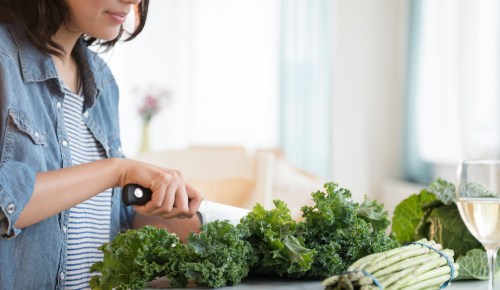
Even as an adult, well past the point where you think broccoli is poison, getting a hefty helping of your vegetables is tough. But let’s shoot for a manageable goal: According to a study out of Edith Cowan University, eating a cup of nitrate-rich vegetables—which includes healthy leafy greens—daily can significantly lower your risk of heart disease.
Experts in This Article
registered dietitian nutritionist and owner of Amy Gorin Nutrition
The study analyzed 50,000 people residing in Denmark for 23 years. They found that those who consumed the most nitrate-rich vegetables had about a 2.5 mmHg lower systolic blood pressure, and between 12 to 26 percent had lower risk of heart disease. It showed that only a cup of veggies raw (or half a cup cooked) worked its heart-happy magic.
Why are leafy greens so powerful—even the very manageable one cup a day? Registered dietitian Amy Gorin, RDN says this is because all greens are full of vitamins, minerals, and antioxidants. Gorin explains that no matter what type of greens you’re adding to your plate, you’ll be getting great fiber, vitamin C, magnesium, calcium, and iron—all linked to supporting the entire body, including the heart. “For instance, kale provides 19 milligrams, or 32 percent of the daily value, of immunity-helping vitamin C per cup, as well as fiber and other nutrients,” says Gorin. “And spinach offers iron, important for transporting oxygen throughout your body. Note that you’ll absorb more of that iron if you pair it with a squeeze of lemon or orange juice.”
While all greens are full of nutritional benefits, Gorin says there are some ways they differ from each other. Keep reading to find out how and to get ideas on how to incorporate more leafy greens into your meals.
Types of leafy greens
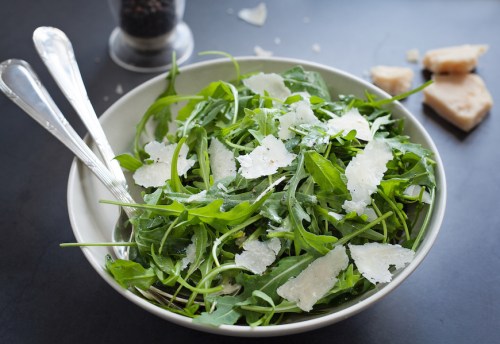
Cris Cantón
1. Arugula
Arugula‘s peppery bite makes it a great green to incorporate into pizza and pesto, but you can enjoy it as-is by the forkful, too. It’s full of potassium, calcium, magnesium, and vitamin C.
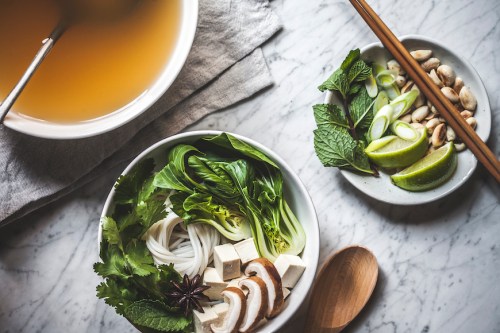
Enrique Díaz / 7cero
2. Bok choy
Just like other types of greens, bok choy is full of fiber, vitamin C, vitamin E, folate, and antioxidants, but something that sets it apart is that it’s an especially good source of selenium. Selenium is important because it helps make DNA and protects again cellular damage. That makes this green particularly good for fighting inflammation.
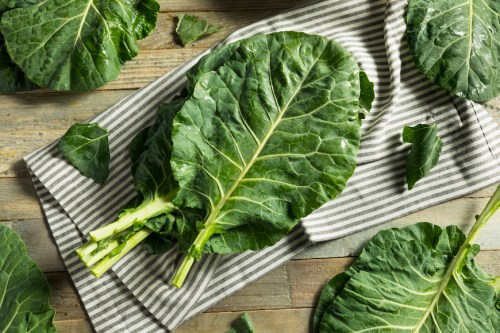
bhofack2
3. Collard greens
Collard greens are higher in protein than other greens, with two grams per cup. It’s not a *huge* amount, but it’s still more than you’ll get from the others on this list, and that’s in addition to all the other nutrients it brings to the table, such as iron, vitamin B 6, and magnesium. Since it’s heartier in texture than many other greens, it’s an especially good one to saute with your favorite herbs.
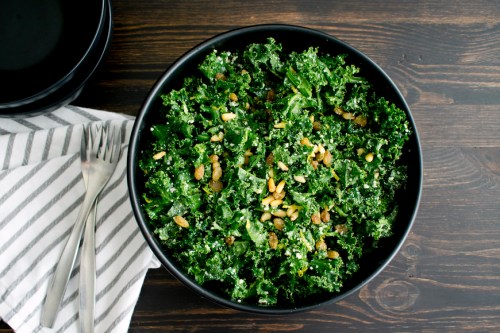
4. Kale
Kale is particularly great for liver support because it contains a category of phytochemicals called glucosinolates. These compounds help detoxify the liver and support other bodily functions. This green is super versatile. Can you eat kale raw? You bet. You can eat it raw, saute it, or incorporate it into your smoothies.

5. Romaine
Romaine is one of the most accessible greens in the U.S. and one standout benefit of this green is that it contains an animo acid called tryptophan, which is linked to better sleep. Besides being used as a core ingredient for salad, they can also be used as wraps, like in the photo above. You can also char romaine straight on the grill.

6. Spinach
If you want to up your iron consumption, spinach is the green for you. It’s also full of potassium and folate, which helps protect against certain types of cancer.
Now that you know why different types of greens are beneficial, let’s get into how to incorporate them into your meals.
How to prepare, cook, and enjoy healthy leafy greens
1. Sauté leafy greens as a side dish
“I love to sautéed leafy greens in low-sodium vegetable broth,” says Gorin. “It’s easier to eat more volume when leafy greens are cooked, and this is a great way to add taste to the greens.”
2. Make leafy greens the base of a salad
As Gorin points out, this is probably the easiest way to eat your greens. She loves using them to make Mediterranean salad rich with olive oil, seafood, spices and legumes. She also favors a lupini bean salad that utilizes crushed pistachio.
Here’s an easy kale salad recipe:
3. Put leafy greens on a healthy pizza
Undoubtedly this wins the award for The Most Likely Way You’ll Get Me to Eat My Vegetables. Sprinkling some crispy greens on top of a carb-and-cheese wheel is a perfect magic trick. “Fresh arugula on top of pizza is so delicious,” says Gorin. “The arugula has a peppery bite to it, and this is a great way to eat your greens.”
This avocado pizza has a cauliflower crust:
4. Make leafy greens a part of your protein bowl
Gorin loves to use leafy greens as a base for a vegan protein bowl, but if you want to mask the taste a little bit, mix it up! The study’s lead researcher, Catherine Bondonno, MD, says that blending your greens will still reap you the benefits, so long as you don’t juice it. That means a protein smoothie bowl can help your greens intake.
Start your day off right with this green goddess breakfast bowl:
Tips for buying and storing leafy green vegetables
Whatever type of greens you’re after, there’s a good chance you’ll be able to find it at your local grocery store. If you can, buy greens that are locally grown and in-season, which is the most sustainable way to shop. If your city or town has a farmers’ market, consider buying your greens directly from local farmers. If you have space, you can even grow your own greens in your backyard.
When you get your greens home, store them in a container with a damp paper towel by first placing the paper towel on top of the greens and then flipping the container over so that the paper towel is on the bottom. This little trick helps keeps your greens fresh without causing them to get soggy. If your greens still start wilting before you get a chance to eat them, you can revive them by soaking them in ice water for 20 minutes.
The bottom line is this: Eating greens directly benefits the entire body, including the heart. The best part is that it really only takes a cup of day to benefit. (Although more than one cup a day is great, too!) With so many different types of greens and ways to incorporate them into your life, it just might be the easiest way to benefit your cardiovascular health.
Oh hi! You look like someone who loves free workouts, discounts for cult-fave wellness brands, and exclusive Well+Good content. Sign up for Well+, our online community of wellness insiders, and unlock your rewards instantly.
Sign Up for Our Daily Newsletter
Get all the latest in wellness, trends, food, fitness, beauty, and more delivered right to your inbox.
Got it, you've been added to our email list.










